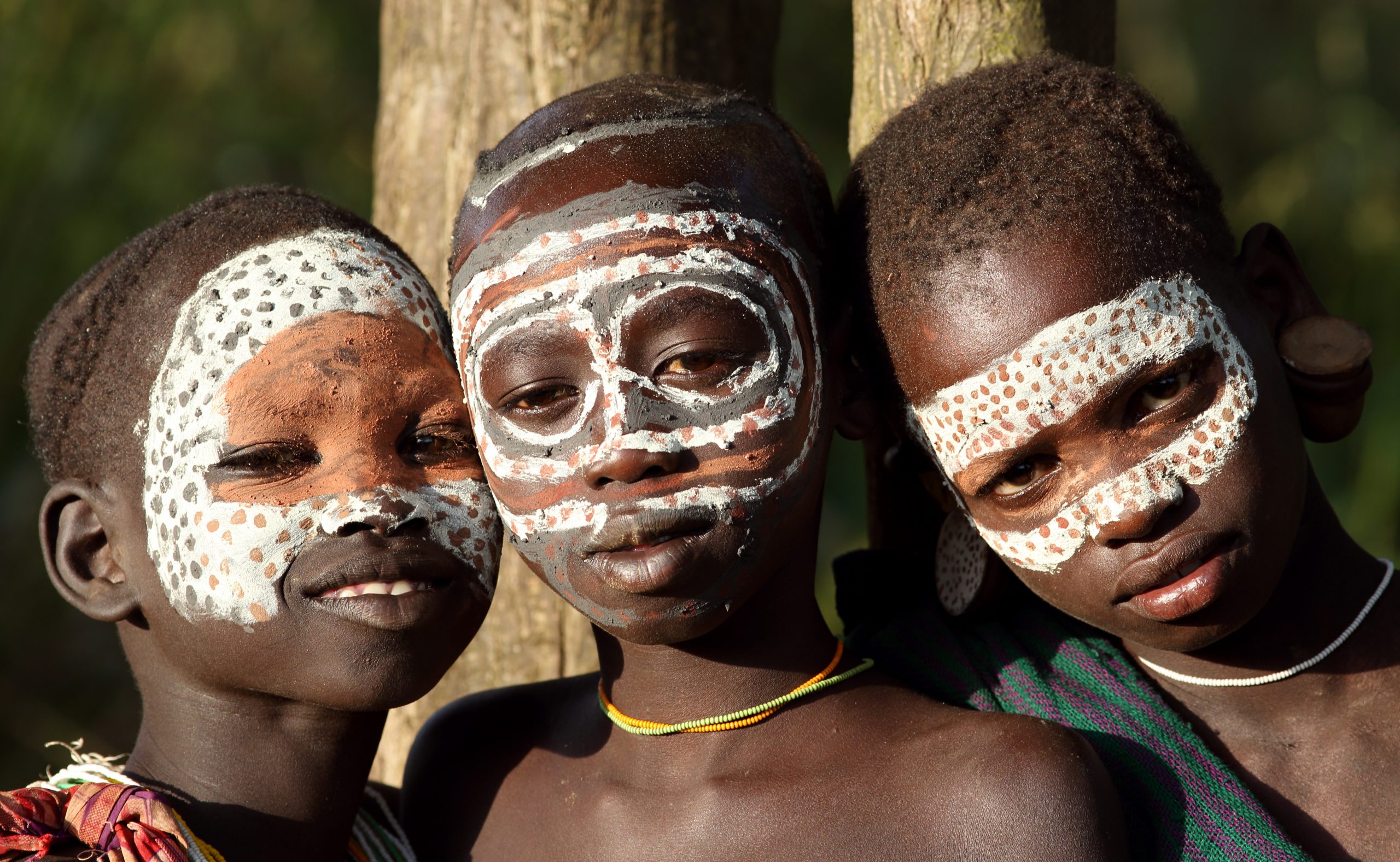Would you ever choose to insert a metal plate in your lower lip to express yourself? Or cut patterns into your cheeks? People all around the world use body modifications as cultural self-beautification, for reasons that seem foreign to outsiders. Nowhere are these practices more deeply ingrained than in Africa, whose multiple tribes’ unique cultures, traditions, and body modifications symbolize this rich history. Just in Ethiopia, the Surma tribes use body modifications to define themselves as an individualistic group of people.
Surma is a name given by the Ethiopian government to identify three different tribes: the Suri, the Mursi, and the Me’en. Body modification types define and identify members of distinct groups. Some modifications overlap between tribes, but each of the three tribes maintains its own stylistic flair.

photo by Dietmar Temps cc
Body Paint
One distinctive body decoration used by the Surma tribes is body painting. The people of the different Surma tribes use clay and other natural minerals to paint their bodies for various purposes. For example, the chief’s children paint their faces white in order to distinguish themselves from other children in the tribe, particularly if there are outsiders visiting the tribe’s village. Also, Surma warriors paint each other’s bodies during hunting season to appear intimidating. They also use body paint for tribal ceremonies and celebrations. Some members of these tribes even believe that the paint helps to protect against harm.

photo by Dietmar Temps cc
Scarification
Surma tribes in Omo, Ethiopia, use scarification to create beauty marks. Scarification is the process of creating permanent marks (scars) on one’s skin, usually by cutting or burning. The Suri tribe uses scarification on the face as well as the body, creating lasting patterns and lines. A scarification ceremony involves using thorns and a razor to create the designs, and tourists can even witness a scarification ritual for a cost. The cuts made in the skin are treated so that they will heal as raised bumps. Those who participate in scarification are usually seen by other cultures as less civilized, and many tribal members who venture out more or receive extended education will try to hide their scarification marks if they have them. Regardless, many tribes see scarification as a mark of beauty. Men, women, and even children participate in ceremonies to permanently decorate their skin and demonstrate their adherence to their tribe’s customs.

photo by Dietmar Temps cc
Lip Plate
Mursi women are often seen with a lip plate in their upper or lower lip. Several months before marriage, a Mursi girl chooses whether or not she would like a lip plate. The procedure starts as a small piercing in the lip, held open by a wooden peg. Larger pegs are inserted gradually until the piercing is big enough for the first plate to be inserted. Every woman creates her own lip plate; she decorates it how she likes and chooses how big the final lip plate will be. Though this unique tradition may seem strange to other cultures, Mursi women practice this ornamentation with pride and a sense of self-esteem.

photo by Dietmar Temps cc
Earrings
Nearly every culture practices and encourages ear piercing, including the Surma tribes. In these tribes, piercings are typically enlarged. Much like the lip plates used in the Mursi tribes, a flat disk made of wood or clay is used to stretch out the ear lobe, each disk larger than the first, similar to the common gauges used in other areas of the world. However, these plugs are not limited to round disc-like shapes. Thorns, stones, bones, and even film canisters can be used to stretch the ear and serve as a fashionable piece of jewelry. This is one African tradition that has caught fire in many countries and continues to grow in popularity, but some of the most incredible ear stretching modifications are still found in the heart of the Surma tribes.
African peoples certainly vary in their approaches to beauty, and each tribe has something unique to contribute. While some approaches are painful, all of these traditions serve a purpose: to enhance the unique appearance of the people and culture.
—Shanna Clayton and Cherie Stewart
Featured image by Dietmar Temps cc

